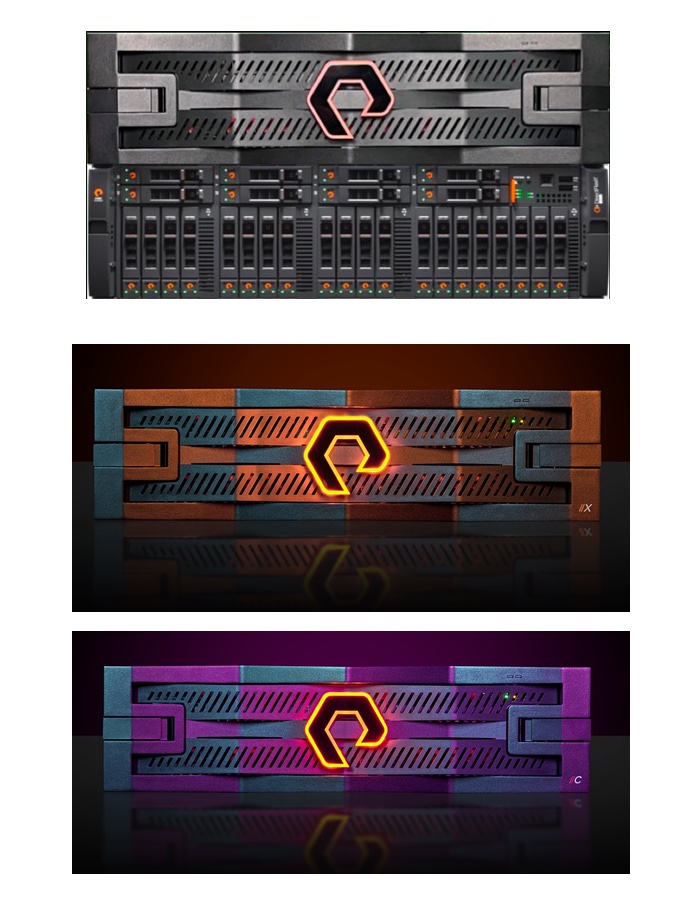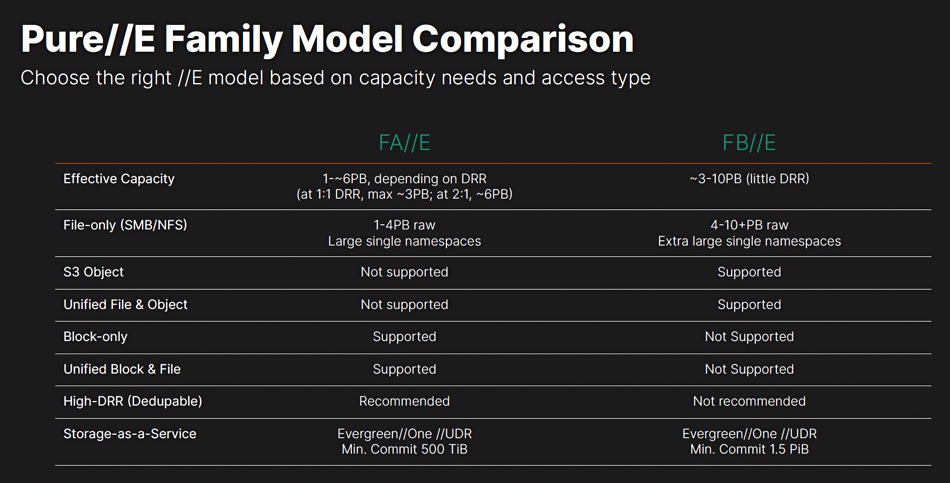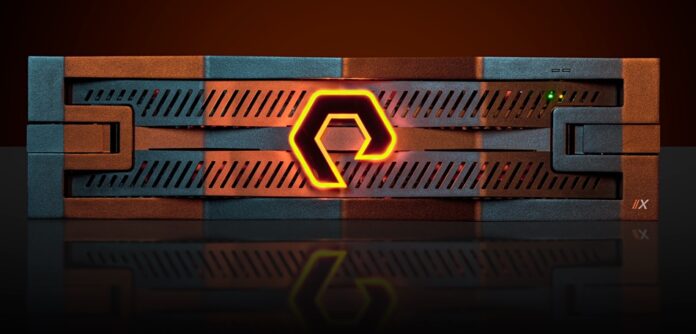Pure Storage announced improved FlashArray hardware and software, an unstructured data storage FlashArray system, and a ransomware recovery guarantee at its Las Vegas Pure Accelerate event.
FlashArray is Pure’s line of all-flash unified block+file storage arrays for applications needing fast data IO with high-performance //X models and tier 2 workload FlashArray//C products. These now get a capacity-optimized //E model, similar in design to the FlashBlade//E.
Pure chairman and CEO Charles Giancarlo said: “We are now delivering the industry’s most consistent, modern, and reliable portfolio that can address all enterprises’ storage needs. As we enter a new age of AI, the superior economics, and operational and environmental efficiencies of Pure’s product portfolio over both hard disk and SSD-based, all-flash competitive offerings will be more critical to our customers than ever.”

Field CTO Alex McMullan told us: “This is building for colossal scale part two. It is the sequel to the previous, hopefully blockbuster news that we had on this particular topic,” referring to the FlashBlade//E news and coming 300TB Direct Flash Modules.
The existing FlashArray//X and //C models are upgraded to release 4 with the //X10 entry-level product being retired. Pure said: “For customers on Evergreen//Forever, support will transition to the FA//X20 models over time as they become eligible for their ever modern upgrades.”
R4 FlashArray models have Intel’s Sapphire Rapids Xeon SP processors, DDR5 memory, and PCIe gen 4 to provide an up to 40 percent performance boost, over 80 percent increased memory speeds, and a 30 percent inline compression boost to stretch storage capacity. FlashArray//X uses 36TB TLC (3bits/cell) Direct Flash Modules (DFMs), Pure’s flash drives with built-in NVRAM. FlashArray//C will get 75TB QLC (4bits/cell) DFMs, delivering 1.5PB per rack unit, a 106 percent increase in density/RU. For comparison, the largest off-the-shelf SSDs will be Solidigm’s 60TB drives due later this year.
These QLC DFMs are scheduled to double in capacity to 150TB in 2025 and then double again to 300TB in 2026. The TLC DFMs have no such doubling and redoubling in their public roadmap.
There is a new FlashArray//C90 product, topping the existing //C50 and //C70 models. The //C90’s maximum effective capacity, assuming a 5:1 data reduction ratio, is 8.9PB from a 6RU chassis. The //XC70 tops out at 4.8PB.
FlashArray//E
Pure has also added a FlashArray//E using the same chassis and 75TB QLC DFMs to bring capacity-optimized, unstructured data storage capability to FlashArray. Its raw capacity ranges from 1 to 4PB and a slide showed its maximum effective capacity, set at a 2:1 data reduction ratio is 6PB, less than the //C90’s 8.9PB.

Pure told us that the whole FlashArray portfolio uses the same Purity operating system software. By the virtue of which they use the same dedupe and compression engines, and therefore similar workloads on FlashArray//E should get the same average as FlashArray//C and FlashArray//X over time.
Pure said that FlashArray//E will enable customers to benefit from an 80 percent reduction in power and space, 60 percent lower operational costs, and 85 percent less e-waste compared to disk arrays. It costs less than $0.20 per GB with three years of support.
Chief product officer Ajay Singh said: “Pure Storage, with the expansion of the Pure//E family of products, is eliminating the last remnants of disk in the enterprise.”
Customers can deploy FlashArray//E and FlashBlade//E through either a new //UDR service tier of Pure Storage Evergreen//One Storage-as-a-Service (STaaS) subscription or through the Evergreen//Flex asset utilization payments for customer-owned arrays.
Ransomware recovery SLA
The Evergreen//One ransomware recovery SLA is a purchased an add-on service guarantee that, in the event of a ransomware attack on a Pure array, a clean replacement array will be shipped to the customer.
The thinking is that, after an attack, storage arrays are often locked down for forensic investigation by cyber insurance or law enforcement, leaving organizations unable to recover data to infected arrays. By guaranteeing clean arrays, Pure enables customers to recover faster.
Evergreen//One guarantees a next business day window to ship clean storage arrays, 48 hours to finalize a recovery plan started at any time, a data transfer rate (8TiB/Hour), and a professional services engineer onsite through RMA (Return Merchandise Authorization).
Evergreen//One also gets new AIOps features, including enhanced data structure change anomaly detection, data protection assessment and multi-factor authentication.
Pure said that its FlashBlade hardware is GPU Direct Storage (GDS) ready, with software enhancements delivering complete GDS support to be available in the near term.








